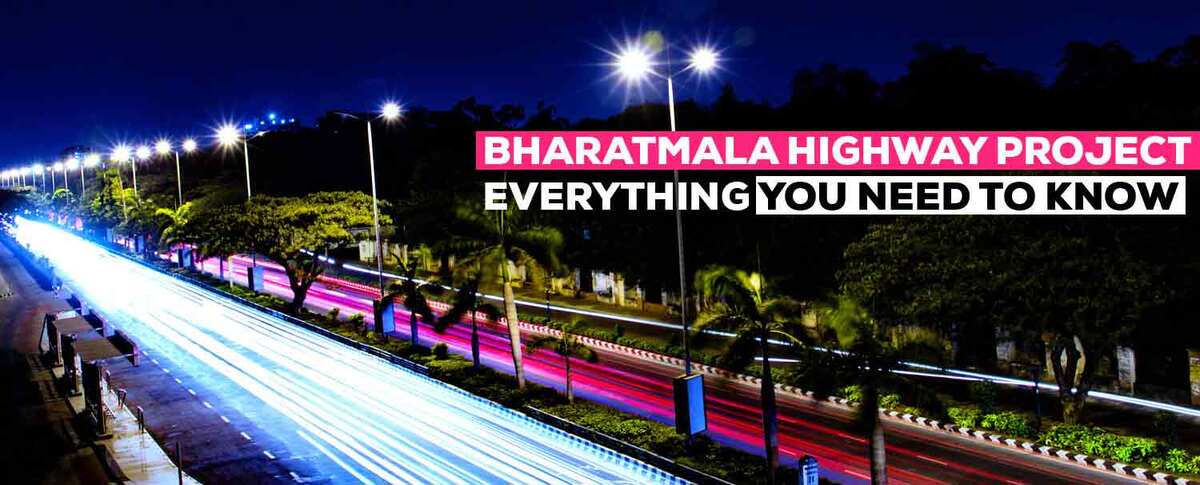Bharatmala Highway Project Everything You Need to Know

The development of a nation depends mainly on transportation networks and their maintenance. Without improved road connectivity, trade relationships would be difficult to manage. Bharatmala was proposed by Shri Nitin Gadkari, the Minister of Road Transport and Highways of India, in the year 2015 to ensure seamless freight and passenger movement. The project aims to fill the infrastructural gaps of the NH network and connect more regions with it. The Bharatmala project was launched in 2017 as an umbrella programme for the highway sector. It is a centrally sponsored and funded road and highways project of the Government of India.
The Objective
The project emphasizes the construction of border and international connectivity roads, NH networks that connect coastal regions and ports, including economic corridors and greenfield expressways. The central objective is to promote international trade relationships with Myanmar, Bangladesh, Bhutan, Nepal, and for that, this scheme is of high strategic importance. Once completed, it will effectively reduce the traffic pressure and ensure seamless transportation in less time and costs.
Key Features:
To understand the project better, here are a few key features:
- This project aims to improve the quality of road networks, promoting development across the country.
- Construction of new roads that would add value to both national and international trade systems, connecting several districts through national highways.
- The project is expected to be completed in 5 years and is being divided into several phases for the ease of execution.
The Plan in Phases:
Bharatmala Phase 1
- A target of constructing 24,800 KMs has been set in this phase by the year of 2022.
- Simultaneously, the National Highways Development Programme will monitor 10,000 km of balanced road works in this phase.
- To complete this phase on time, a target of constructing 18 km of path per day has been set. Consistent efforts are being invested to raise it by 10 to 12 km.
Bharatmala Phase 2
- The Government aims to construct 4000 km of Greenfield roads and 3000 km of expressways under the second phase of Bharatmala.
How will this project benefit the country?
India's road network is considered the second largest in the world. As recorded in the year 2017, the total estimated length of the network is nearly 55 lakh KM, and more than 60% of the freight movement in India is currently carried on road networks. National highways cover only 2% of this total network area, yet they share the traffic load of around 40%. With the implementation of the Bharatmala project, a host of new road networks will add value to the Indian trade and transportation system.
Improved Connectivity:
Currently, 300 districts are linked through National Highways. The project will link 550 districts in total out of 716 districts through NH connectivity. It is expected that the NH connection will rise from 42% to 80% within the given timeline.
Improved Passenger Movement:
Passengers will be provided with roadside amenities throughout the corridors, improving the convenience and livelihood of the locals.
Improved Freight Movement:
Nearly 80% of the freight movement is going to happen through interdistrict connections. A positive impact on logistics performance is expected as an outcome, too.
Seamless Transportation in a Shorter Time and Costs:
Bridging the infrastructure and joining economic corridors with intercorridors and feeder routes will enable vehicles to speed up by about 20% on average. It will help them to cover longer distances in less time.
This will effectively be beneficial in terms of reducing overall supply chain costs in the country's economy.
Employment:
During the first construction phase of the NH network, it is estimated to generate no less than 10 crore man-days of employment. Increased economic activities are likely to generate nearly 22 million permanent jobs across the country.